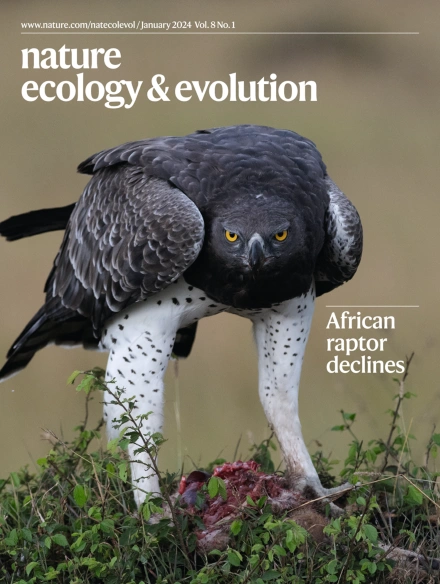meta分析表明,种植固氮树种增加了土壤有机碳储量。
IF 13.9
1区 生物学
Q1 ECOLOGY
引用次数: 0
摘要
固氮物种广泛应用于造林和农业。然而,种植固氮物种对土壤有机碳(SOC)储量的影响仍然不确定,这限制了政策的制定及其在可能的气候变化减缓战略中的应用。本文对136项研究的385个数据点进行了荟萃分析,比较了种植固氮和不种植固氮物种的土壤有机碳储量。种植固氮树种可使土壤有机碳储量比非固氮树种增加16%。土壤有机碳的增加与土壤氮的增加密切相关,每增加1克土壤氮,土壤有机碳的平均积累量为7.8 g。气候调节有机碳响应,在干燥和温暖的地区,特别是在热带地区,观察到更大的有机碳封存。我们估计,通过采用固氮物种造林、农业和边缘土地更新,全球碳储量可额外增加0.29-0.75 PgC / 1,突出了它们减缓气候变化的潜力。本文章由计算机程序翻译,如有差异,请以英文原文为准。
Meta-analysis shows that planting nitrogen-fixing species increases soil organic carbon stock.
Nitrogen (N)-fixing species are widely used in forestation and agriculture. The effects of planting N-fixing species on soil organic carbon (SOC) stock, however, remain uncertain, limiting policy development and their application towards a possible climate change mitigation strategy. Here we conduct a global meta-analysis of 385 datapoints from 136 studies comparing SOC stock with planting N-fixing versus non-N-fixing species. Planting N-fixing species increases SOC stock by 16% compared with non-N-fixing species. This SOC increase is closely accompanied by soil N increases, with an average accumulation of 7.8 g of SOC per gram of soil N increase. Climate mediates SOC responses, with greater SOC sequestration observed in drier and warmer regions, particularly in the tropics. We estimate that an additional increase of 0.29-0.75 PgC yr-1 in global SOC stock could be achieved by adopting N-fixing species for forestation, agriculture and regeneration of marginal lands, highlighting their potential for climate change mitigation.
求助全文
通过发布文献求助,成功后即可免费获取论文全文。
去求助
来源期刊

Nature ecology & evolution
Agricultural and Biological Sciences-Ecology, Evolution, Behavior and Systematics
CiteScore
22.20
自引率
2.40%
发文量
282
期刊介绍:
Nature Ecology & Evolution is interested in the full spectrum of ecological and evolutionary biology, encompassing approaches at the molecular, organismal, population, community and ecosystem levels, as well as relevant parts of the social sciences. Nature Ecology & Evolution provides a place where all researchers and policymakers interested in all aspects of life's diversity can come together to learn about the most accomplished and significant advances in the field and to discuss topical issues. An online-only monthly journal, our broad scope ensures that the research published reaches the widest possible audience of scientists.
 求助内容:
求助内容: 应助结果提醒方式:
应助结果提醒方式:


